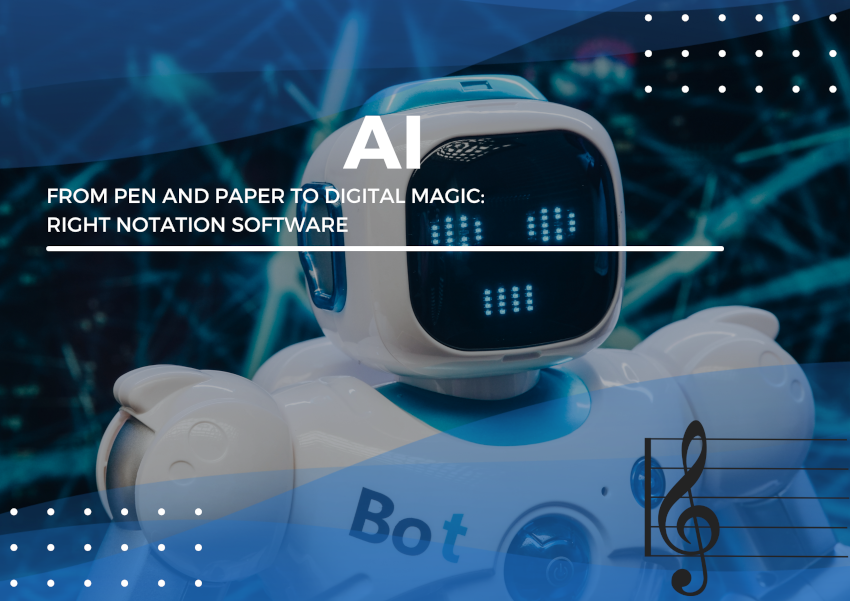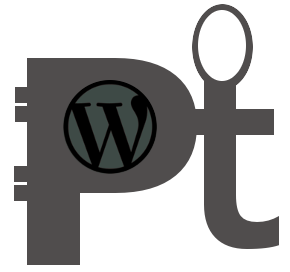Search Topic
From Pen and Paper to Digital Magic: Right Notation Software
The Evolution of Music Notation
Music notation has been an essential tool for composers, musicians, and music educators for centuries. Traditionally, pen and paper were the primary mediums for notating musical ideas and compositions. However, with the rapid advancements in technology, the landscape of music notation has transformed significantly.

In today’s digital age, musicians have access to a wide range of notation software that offers numerous benefits and features. This article delves into the world of digital notation software, exploring its advantages, comparing different types available, delving into advanced features and tools, providing tips for efficient usage, and discussing its impact on music education. Additionally, we address common concerns and challenges in transitioning to digital notation and give a glimpse into the future of music notation software. Join us as we embark on a journey from pen and paper to the magic of digital notation.
The Importance of Music Notation
Music notation has been the backbone of the musical world for centuries. It allows composers and musicians to communicate their ideas, ensuring that music can be accurately reproduced and interpreted. From symphonies to solo pieces, music notation has played a vital role in preserving and sharing musical creations.
Traditional Pen and Paper Notation
Historically, music notation was done by hand using pen and paper. While this method has a certain charm and nostalgia, it can be time-consuming and prone to errors. Erasing and rewriting notes, making changes to the composition, and sharing physical copies pose challenges that can slow down the creative process.
The Need for Digital Notation Software
Enter digital notation software, the modern-day wizardry that has revolutionized the way music is composed, transcribed, and shared. These software applications offer a range of features designed to streamline the notation process, making it faster, more efficient, and error-free. Let’s dive into the benefits of using digital notation software.
Benefits of Using Digital Notation Software
Increased Efficiency and Productivity
Digital notation software eliminates the need for erasures and rewrites, allowing composers to make changes effortlessly with just a few clicks. It offers features like automatic note spacing, clef changes, and dynamic markings, which save valuable time and reduce the chances of mistakes. With the software’s intuitive interface and keyboard shortcuts, music composition becomes a breeze.
Enhanced Collaboration and Sharing
Collaborating with fellow musicians or sharing compositions with others becomes a seamless experience with digital notation software. These applications allow real-time collaboration, enabling multiple users to work on the same piece simultaneously. Gone are the days of mailing physical scores; now, you can share your compositions digitally with just a few simple clicks.
Flexibility and Customization Options
Digital notation software gives composers the freedom to customize their compositions with ease. Want to change the key signature or transpose a section? No problem. Need to adjust the tempo or experiment with different instrument sounds? Consider it done. With the ability to customize every aspect of the music, the software lets composers bring their vision to life.
Comparing Different Types of Notation Software
Notation Software A: Features and Functionality
Notation Software A boasts an impressive array of features, from simple note input to complex score layout options. Its intuitive interface makes it suitable for beginners, while its robust tools cater to the needs of professional composers. With its extensive library of instrument sounds and orchestral samples, it ensures your composition sounds as authentic as possible.
Notation Software
B: Strengths and Limitations
Notation Software B shines in its user-friendly interface, making it easy for musicians of all skill levels to jump right in. Its strength lies in its seamless integration with MIDI devices, allowing composers to easily record and play back their compositions. However, its limited customization options and lack of advanced notation techniques might not suit the needs of more experienced users.
Notation Software
C: User-Friendliness and Compatibility
Notation Software C prides itself on its user-friendly design and compatibility across different operating systems. It offers a wide range of notation options, from traditional staff notation to guitar tablature. Its cloud-based storage allows for easy access to your compositions from any device, making it a convenient choice for musicians constantly on the move.
Exploring Advanced Features and Tools for Music Notation
Advanced Notation Techniques
Digital notation software opens up a world of advanced notation techniques. From complex time signatures to graphic notation, it empowers composers to explore new musical territories. With the ability to notate glissandos, trills, and other expressive techniques with precision, the software allows for more accurate interpretations of the composer’s vision.
MIDI Integration and Virtual Instruments
One of the most exciting aspects of digital notation software is its integration with MIDI devices and virtual instruments. Composers can now compose directly with virtual instruments, hearing their compositions come to life as they write. MIDI integration also enables composers to fine-tune their compositions, quantize performances, and experiment with different instrument sounds and articulations.
Audio Playback and Recording Options
Digital notation software goes beyond mere visual representation, offering composers the ability to play back their compositions in stunning audio quality. With high-quality instrument samples and audio effects, composers can listen to their music as it would sound performed by a live orchestra. Additionally, the software often includes built-in recording capabilities, allowing composers to create demos or professional recordings of their compositions.
So, whether you’re a composer looking to streamline your creative process, a musician seeking collaboration opportunities, or simply someone who loves music and wants to explore new notation techniques, digital notation software is the magic wand that will transform your musical journey. Embrace the technological wonders and see where this digital revolution takes you! Advancements
Integration with Artificial Intelligence
Seamless Cross-platform Collaboration
Tips for Efficiently Using Digital Notation Software
Keyboard Shortcuts and Customization
When it comes to using digital notation software, mastering keyboard shortcuts is like finding the secret ingredient to a great recipe. These shortcuts can save you precious time and make your workflow more efficient. From navigating through menus to inputting notes and symbols, knowing the right keyboard shortcuts can significantly speed up your work. Additionally, most software allows for customization, so you can tailor the shortcuts to your personal preferences.
Utilizing Templates and Style Sheets
Templates and style sheets are your new best friends in the digital notation realm. They provide you with pre-designed layouts and formatting options, saving you from the hassle of starting from scratch. Whether you need a score for a solo piano piece or a chamber orchestra arrangement, templates can be a real time-saver. Style sheets, on the other hand, allow you to define consistent visual elements throughout your scores, giving them a professional and polished look.
Organizing and Managing Music Scores
Gone are the days of lost or misplaced sheets of music. With digital notation software, organizing and managing your music scores becomes a breeze. You can create folders and subfolders to categorize your scores, making it easy to find what you need. Some software even offers tagging and search functions, allowing you to quickly locate specific pieces or sections. You can say goodbye to frantic searches and hello to a neatly organized digital library.
The Impact of Digital Notation Software on Music Education
Enhancing Learning and Teaching Experiences
Digital notation software has revolutionized music education by providing students and teachers with powerful tools for learning and teaching. With interactive features like playback, students can hear their compositions come to life, helping them understand musical concepts better. Teachers can also annotate scores digitally, offering precise feedback and guidance. This software empowers both students and teachers to explore and experiment with music in exciting ways.
Collaborative Learning Opportunities
Digital notation software opens up a world of collaborative learning opportunities. Students can now easily share their compositions, receive feedback, and collaborate with peers in real-time. This fosters a sense of community and encourages creativity. Teachers can also create assignments and assessments that can be submitted digitally, streamlining the feedback process. The software breaks down geographical barriers and allows musicians from different parts of the world to connect and collaborate effortlessly.
Adapting to Changing Educational Practices
As education moves towards digital platforms, digital notation software helps music education keep pace with changing practices. Online learning and remote instruction have become more prevalent, and digital notation software provides the necessary tools for these modes of teaching and learning. It allows for seamless integration with learning management systems, online classroom platforms, and virtual performance environments. Music education can adapt and thrive in the digital age with the help of this technology.
Addressing Common Concerns and Challenges in Transitioning to Digital Notation
Learning Curve and Training
Like any new skill, transitioning to digital notation software comes with a learning curve. However, with a little patience and practice, you’ll soon become proficient. Many software providers offer tutorials, online forums, and support resources to help you navigate through any challenges. Additionally, reaching out to fellow musicians who have made the transition can provide valuable insights and tips.
Compatibility and File Transfer Issues
As with any digital technology, compatibility and file transfer issues can arise. It’s important to ensure that the software you choose supports the file formats commonly used in the music industry. Furthermore, keeping your software up-to-date and regularly backing up your files will minimize the risk of data loss or compatibility issues. Taking these precautions will help you avoid any headaches along the way.
Preserving the Artistic Touch in Digital Notation
One concern when transitioning to digital notation software is the fear of losing the artistic touch that comes with pen and paper. However, it’s important to remember that the software is merely a tool to bring your musical ideas to life. With a little creativity and exploration, you can still infuse your scores with your personal artistic expression. Experiment with different notations, dynamics, and articulations offered by the software to maintain your unique style.
Looking Ahead: The Future of Music Notation Software
Emerging Technological Advancements
The future of music notation software looks promising, with emerging technological advancements on the horizon. From improved optical music recognition (OMR) capabilities to advanced music analysis algorithms, software developers are constantly striving to enhance the accuracy and efficiency of these tools. We can expect software with smarter and more intuitive features that will simplify the notation process even further.
Integration with Artificial Intelligence
Artificial intelligence (AI) is set to revolutionize the music industry, and music notation software will benefit from this integration. AI-powered software may offer automatic transcription, intelligent suggestions for harmonies, and even composition assistance based on user preferences. This exciting development will not replace human creativity but rather augment it, opening up new avenues for musical exploration.
Seamless Cross-platform Collaboration
As global connectivity continues to advance, the ability to collaborate seamlessly across different platforms will become increasingly important. Future music notation software may offer enhanced compatibility, making it easier for musicians to collaborate regardless of the software or devices they use. This will further enrich the collaborative potential of the digital realm and foster a more connected and vibrant musical community.
From pen and paper to digital magic, music notation software has transformed the way musicians create, share, and teach music. Embracing these tools and harnessing their power allows us to unleash our musical potential in ways that were once unimaginable. So, let’s embrace the digital revolution and compose, collaborate, and notate with ease and flair!In conclusion, the advent of digital notation software has revolutionized the way music is composed, shared, and taught. With its numerous benefits, such as increased efficiency, enhanced collaboration, and customization options, digital notation software has become an indispensable tool for musicians of all levels. While the transition from pen and paper to digital may come with challenges, the rewards are undeniable. As technology continues to advance, we can only anticipate more exciting developments in the realm of music notation software. So embrace the digital magic, explore its advanced features, and unlock new possibilities for creativity and musical expression.








